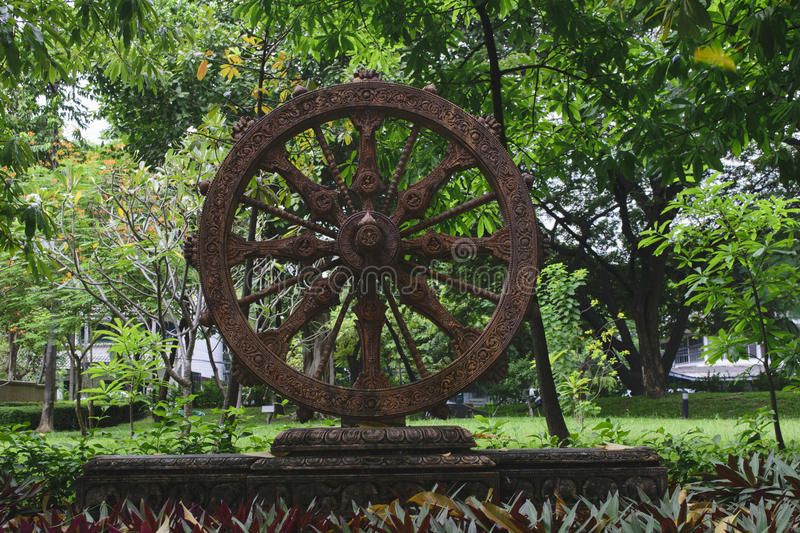
The performance of the last rites is a dutiful service to the deceased in all societies of the world. In the Sanatana Vedic Dharma, the last rites go beyond funeral (अन्त्येष्टि/antyeSTI) and memorial service (the 13th day propitiatory rite of (शान्ति कर्म/zAnti karma) and continue as the sacred ceremony of ShrAddha (श्राद्ध/zrAddha) which may go on for about hundred years thereafter. Shraddha is an obligatory duty upon the descendant or an eligible relative to worship and make special offerings to the deceased. Ancestors who are entitled for worship include the parents, grandparents and great grandparents. Keeping 25 to 30 odd years as generation gap, an ancestor in the family is offered worship for almost 75 to 100 years by the descendants!
ShrAddha is a kind of sacrifice in the Sanatana Vedic Dharma in which departed ancestors (पितरः/pitaraH) of the last three generations, from both the paternal and maternal descent, are invoked as gods (देवाः/devAH) and offered libation on the sacred ground, unlike the sacrifice performed for the gods in which offering is always made in the sacred fire. The rites and ritual of ShrAddha are also termed पिण्ड-पितृयज्ञ/piNDa-pitR-yajJa. ShrAddha is performed monthly on the date of death for one year, than annually on the death anniversary for the first three years and thereafter it is done on the date of death as and when it falls during the पितृ-पक्ष/pitR-pakSa, that is, the dark fortnight of Ashwin month (September-October). Finally, ShrAddha is performed at some sacred place, like Gaya or other पितृ-तीर्थ /pitR-tIrtha (the place of pilgrimage for ancestral worship).
The word पितृ (pitR) in Sanskrit stands for father and श्राद्ध (ShrAddha), a combination derived from श्रत् (shrat) + धा (dhA), denotes truthful-doing; the etymological connect is evident. The word conveys the sense of truthful discharge of duty towards forefathers. The truth lies in the belief that the forefathers attain peace and happiness through the act of ShrAddha and they, in turn, bestow peace and happiness upon the performer. The central ritual in the ShrAddha is offering libations of black sesame seeds in water (तिल-उदक/tila-udaka) and the cakes of barley or paddy flour (पिण्ड/piNDa) in the name of the departed ancestors; hence, it is called the पिण्डोदक क्रिया (piNDodaka kriyA). In Gita (I.42), the greatest among the scriptures of Sanatana Vedic Dharma, it has been clearly mentioned that पतन्ति पितरो ह्येषाम् लुप्त पिण्डोदक क्रिया “Deprived of the piNDodaka kriyA, their ancestors also fall.”
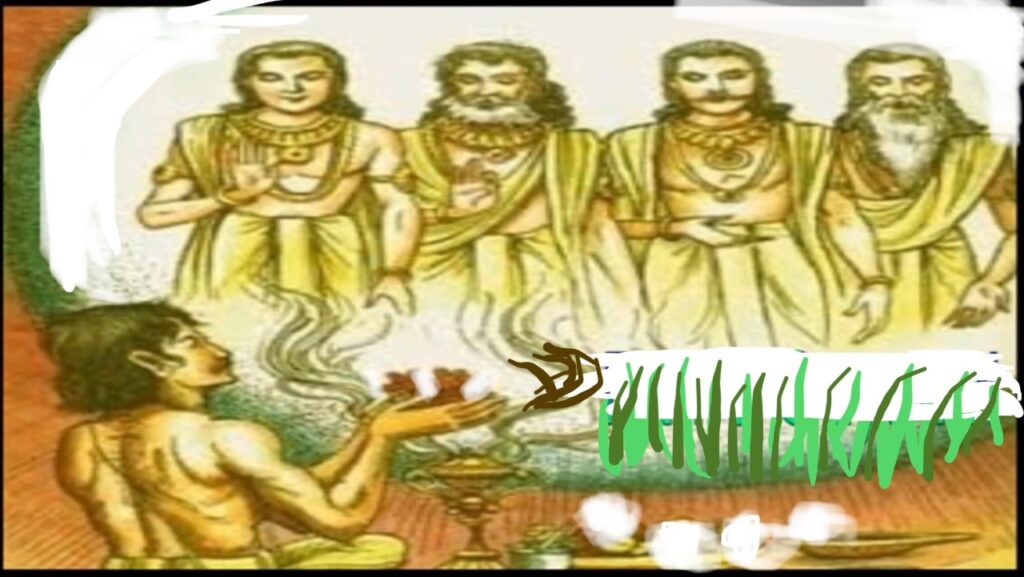
The basic idea in the Vedas why the Fathers are worshipped is to rejoice with the ‘gracious minded fathers in the company of Yama’ as RgVeda (X.14.10) says: अथा पितॄन सुविदत्रानुपेहि यमेन ये सधमादम्मदन्ति || Yama overlords Death in the Vedic pantheon. The Atharva Veda prays to ओदन, ‘the offering of rice’ to fulfil the wish to join genitors and children who have passed on at heaven- स्वर्गं लोकमभि नो नयासि सं जायया सह पुत्रैः स्याम।। (AV XII.3.17). The wish speaks of the continuity of the bond between the forefathers and their descendants even after their sojourn in heavenly realms. Several passages are available in the Brahmanas, the oldest layer of the Vedic liturgical texts which describe the jural action of offering food to the class of forefathers. For example, the Shatapatha Brahmana suggests that “food of the sacrifice is offered to the gods in the forenoon, to men in the noon and to forefathers in the afternoon” (तस्मै ह स्म पूर्वाह्ने देवाः। (S) अशनमभिहरन्ति मध्यन्दिने मनुष्याः (S) अपराह्ने पितरः ।।1.6.3.12). The word ShrAddha, for the first time, appears in the next layer of post-Vedic texts: the Grihya Sutras, Dharma Sutras and Smritis. For example, Baudhayan’s Dharma Sutra (II.8.14) prescribed how the cake of barley or paddy flour (पिण्ड/piNDa) should be offered to the forefathers: वयसां पिण्डं दद्यात्। वयसां हि पितरः प्रतिमया चरन्तीति विज्ञायते।। The ritual of feeding and honouring Brahmans, who mediate between the descendants and their forefathers at the ShrAddha ceremony, and the panegyries on ShrAddha (फलश्रुति) were also laid down in these texts. The Puranas and medieval liturgical texts explained the precept of ShrAddha in a detailed and more lucid way. They added on the ritual of piND-dAna at sacred places such as Gaya, which guaranteed liberation (मुक्ति/mukti) of the spirit (आत्मा)from an existence of suffering (प्रेत/preta) and even granted salvation (मोक्ष/mokSa) from the cycles of rebirth in the world (संसार चक्र/saMsAra cakra). The ShrAddha was a felt-necessity for wish-fulfilment of the community at large for propitiating the spirits (आत्मा /AtmA) of their forefathers and also uniting them with the Eternal Spirit (परमात्मा /paramAtmA). As the Harivamsa Purana (I.21.1) clearly says : श्राद्धे प्रतिष्ठितो लोकः श्राद्धे योगः प्रवर्तते।। “the world derives support from ShrAddha and Yoga (योग/the Union) springs from it”.
The universality of ShrAddha among Hindus, notwithstanding their belief in metempsychosis, often perplexes scholars. Some believe that the worship of ancestors by means of ShrAddhas was a more ancient institution than the doctrines of ‘rebirth and karma principle’ and the Sanatana Vedic Dharma, being all-embracing, retained the institution. However, the idea of afterlife and rebirth is clearly mentioned in RgVeda, as it can be seen in the hymn of Yama (RV 10. XIV.8): सं गच्छस्व पितृभिः सं यमेनेष्टापूर्तेन परमे व्योमन् । हित्वायावद्यं पुनरस्तमेहि सं गच्छस्व तन्वा सुवर्चाः।। Its meaning is: “Meet Yama, meet the Fathers, meet the merit of free or ordered acts, in the highest heaven. Leave sin and evil, seek a new dwelling for yourself, and wear another body that is bright with glory. (Griffith’s translation)” In the most elaborate of the Vedic liturgical texts, the Shatapatha Brahmana, a couple of verses speak of the idea of rebirth For example, स ह सर्व्वतनूरेव यजमानोsमुष्मिंल्लोके सम्भवति यs एवं विद्वान्निष्क्रीत्या यजतेः।।(SB.11.I.8.6). It clearly indicates the supreme reward of all sacrifices is to be born in heaven with one’s own body. The doctrine of rebirth is suggested by “सर्व्वतनूरेव यजमानोsमुष्मिंल्लोके सम्भवति” that is, “rejoining another complete body in the heaven.”
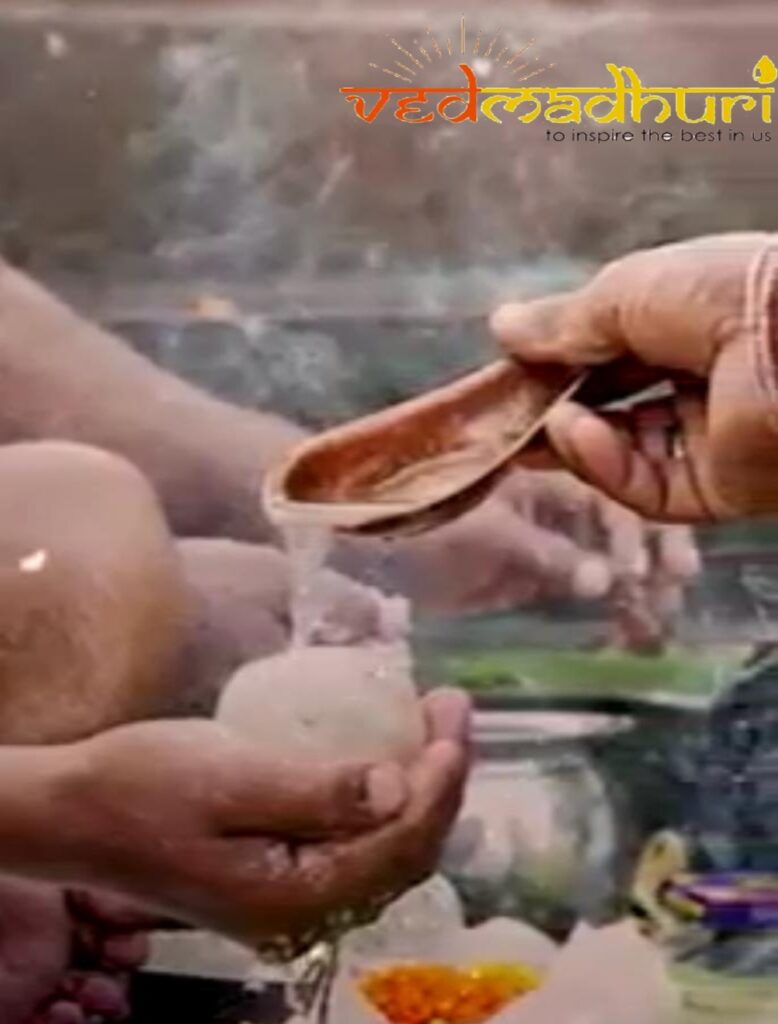
Based on the seedling ideas of ordered acts, attainment of heaven and rebirth in the Vedas, the Upanishadic and Buddhist doctrines went on to explain an ongoing process of repeated birth and death of man (पुनर्जन्म /punarjanma) conditioned by his actions (कर्म /karma). The doctrine of karma and punarjanma is explained in Gita. To quote two verses on the Law of Karma and rebirth from Gita: त्रैविद्या मां सोमपाः पूतपापा यज्ञैरिष्ट्वा स्वर्गतिं प्रार्थयन्ते। ते पुण्यमासाद्य सुरेन्द्रलोकमश्नन्ति दिव्यान्दिवि देवभोगान्॥ ते तं भुक्त्वा स्वर्गलोकं विशालं क्षीणे पुण्ये मर्त्यलोकं विशन्ति एवं त्रयीधर्ममनुप्रपन्ना गतागतं कामकामा लभन्ते ॥ (Gita 9.20-21). That means, “The Knowers of the three Vedas, the drinkers of soma, purified from sin, worshipping through sacrifices, pray for the way to heaven; they reach the holy world of the Lord-of-the-gods and enjoy in heaven the divine pleasures of the gods. They, having enjoyed the vast heaven-world, when their merits are exhausted, enter the world-of-the-mortals; thus abiding by the injunctions of the three Vedas, desiring the objects of desires, they attain to the state of going-and-returning (Prabhupada’s translation).” The idea and meaning of karma and punarjanma is rooted in the depth of human psyche. The average person can attain ‘स्वर्ग or heaven’, the place of perfect happiness and the ideal replica of his life, through meritorious conduct and ritualistic practices. However, desire for happiness does not allow his release from the chronic suffering of birth and death even after attaining heaven. Salvation, in the doctrine of karma and punarjanma, can be attained only by acquiring true wisdom and ethical conduct rather than by practicing rituals.
It is surprising that the two seemingly contradictory doctrines of liberation by ‘Truthfully doing (the rite of ShrAddha)’ and by ‘acquiring True Wisdom (the philosophy of Yoga)’ respectively, have co-existed in the Sanatana Vedic Dharma through an intricate process of reconciliation. Thus, Shankaracharya, the greatest proponent of the Upanisadic thought “अहं ब्रह्मास्मि” or “I am Brahman” is also believed to have performed ShrAddha of his mother at Sidhpur in Gujarat. Gaya, the place where Buddha attained enlightenment also retained its status as the most sacred place for performing ShrAddha. The Gita explained transmigration of soul through two routes respectively leading to rebirth and salvation. For example when it is said (Gita VIII.26) : शुक्लकृष्णे गती ह्येते जगतः शाश्व्ते मते। एकया यात्यनावृत्तिमन्ययावर्तते पुनः।। “According to Sanatana Vedic opinion, there are two ways of passing from this world — one in light and one in darkness. When one passes in light, he does not come back; but when one passes in darkness, he returns.”At the same time Gita emphasizes on the need of “truthfully (shraddhayA) doing all sacrifice, charity or penance, without which it is considered false and useless, both in this life and the next” when it says अश्रद्धया हुतं दत्तं तपस्तप्तं कृतं च यत्।असत् इति उच्यते पार्थ न च तत् प्रेत्य नो इह।। (Gita XVII.28)
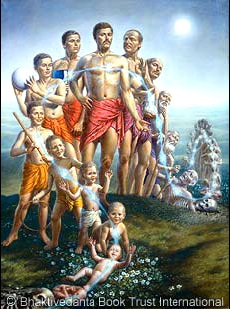
(Credit: ISKCON)
The doctrine of offering the piNDa for gratification of three ancestors requires that the spirits of the three ancestors, even after the lapse of 75 or 100 years, are still capable of enjoying in an ethereal body the essence of the offerings and retaining their kinship connect intact even in afterlife. A firm believer in the doctrine of karma and punarjanma may find it difficult to believe that the spirit of ancestors did not find salvation or an opportunity to enter into a new body. As Gita very clearly says: वासांसि जीर्णानि यथा विहाय नवानि गृह्णाति नरोपराणि। तथा शरीराणि विहाय जीर्णानन्यानि संयाति नवानि देही।। “Just as a man casts off his worn out clothes and puts on new ones, so also the soul casts off its worn out bodies and enters others which are new. This difference between the two schools of thought was debated in the texts like Vishvarupa’s commentary of Yajnavalkya Smriti (800-850 AD) and the ShrAddha-kalpa-lata of Nandapandita (1600 AD). The Arya Samaja in the modern times out rightly objected to the institution of ShrAddha and Maharshi Dayananda in Satyartha Prakash (1875) interpreted pitR in the Veda as living men in the Vanaprastha (वानप्रस्थ or the Hermit Stage of Life) and not as forefathers. Therefore, to answer the question “Why the Sanatana Vedic Dharma retained the institution of ShrAddha together with the doctrine of Karma and Punarjanma?” is not easy.
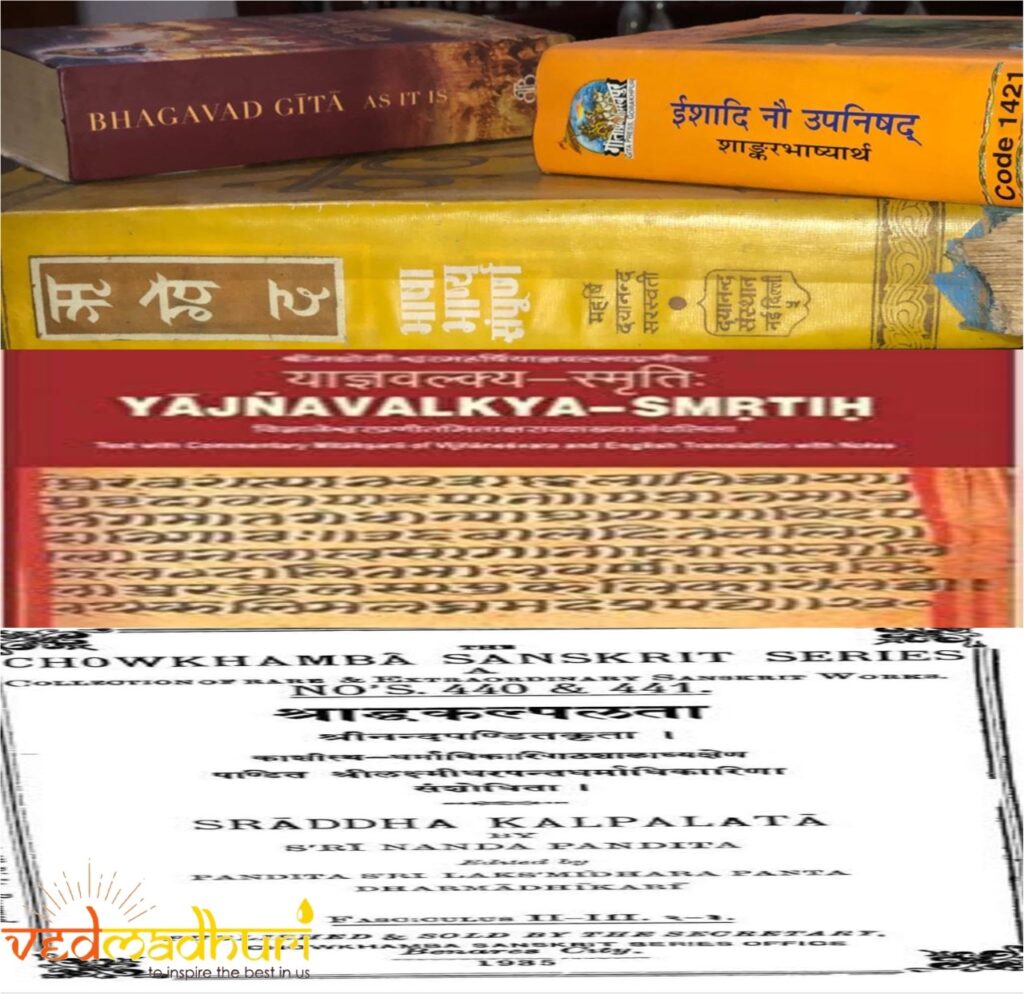
The answer perhaps lies in the ancient wisdom that developed the institution of ShrAddha as a sociological mechanism for maintaining the integrity of the lineage of the bereaved family and also as a potent psychological device to overcome the stress of bereavement. Death is a painful experience and the ShrAddha, in a way, fulfils the psychological need of the bereaved family. It involves elaborate rites and rituals, usually performed by the patriarch of the family, the tarpana (offering libation with water) becomes a daily affair and piNDa-dAna is done on the date of death on a monthly basis for one year than annually for three years on the death anniversary. Thereafter, it becomes a ritual to be performed during the pitR-pakSa in the calendar only. Sociologically it fulfils the requirement of internalization of family values by the patriarch who is accepted by the family in his new role as he takes up the role of the departed ancestor being the senior most in the line of descent. It also helps the living generations to remember their pedigree that helps in identification of heirs and avoidance of inter-marriages between descendants who are close in lineage. In fact, the family tree is meticulously maintained by the priests of Gaya who perform ShrAddha generation-by-generation.
Psychologically, the ShrAddha rituals have a construct in which the deceased is still alive. “Invoking” him by name and “propitiating” his soul during a fully awakened state of mind helps the bereaved family members to overcome searching behaviours, including hallucinations, dreams and other illusions and misperceptions—that are frequently reported during the early phase. The bereaved becomes intellectually aware of the finality of the loss long before their emotions would let them accept the new information as true. According to clinical researchers, no two bereaved persons are exactly alike, depression and emotional swings are characteristic of most people for at least several months, and often for more than a year following bereavement. The ShrAddha rituals are scheduled in such a way that it gives sufficient time to the patriarch to internalize his new role and after about three years the bereaved family can be expected to enter the final phase of “resolution” or “reorganization.” Eventually, the survivor is able to recall memories of the deceased without being overwhelmed by sadness or other emotions and is ready to reinvest in the world. It is usually thereafter, a piNDa-dAna at Gaya or sacred place is undertaken.
That perhaps explains why the doctrine of ShrAddha in the Sanatana Vedic Dharma evolved alongside the doctrines of Karma and Punarjanma.
